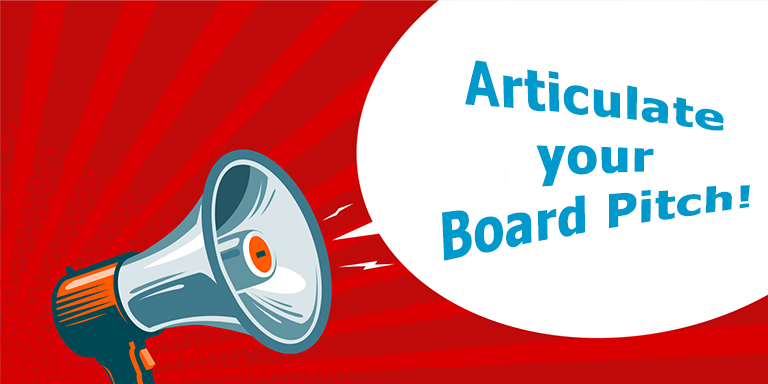How to ensure your Board Application makes the shortlist

Have you submitted an application for a board role that you felt you were well qualified for and passionate about, only to be surprised to receive a rejection email or no response at all after weeks or even months? I can assure you that this is a very common scenario in the highly competitive board appointment process. But it doesn’t have to be that way.
Understanding the evaluation process of board applications is key to increasing your chances of being selected for an interview. It’s important to know how applications are assessed in order to become a shortlisted candidate.
The board application evaluation process
Once you submit your board application, it will be put in a pile, list, or digital folder for review after the closing date. Applications are usually reviewed in bulk after all have been collected, although sometimes they may be assessed early. If a recruitment firm is involved, AI software known as an Application Tracking System (ATS) will likely be used to screen your application initially. To improve your chances of making it to every stage of the process, ensure that all the key criteria are addressed in your cover letter, board resume, and supporting documents. Tailor your board resume by including relevant keywords, skills and qualifications that both human and AI reviewers will be looking for.
The board application shortlist
After receiving all applications, each one is individually graded; this process is known as sifting. Depending on the number of applications, board interview dates and available resources, this process can vary in duration from one day to several weeks. Grading responsibilities may be assigned to a board or executive recruitment consultant, the board’s Chair or a Nominations Committee.
The goal of grading board applications is to narrow down and identify the top candidates for board interviews. Formal grading of applications also allows for a more effective and accountable comparison of candidates. A shortlist usually consists of five to ten candidates, depending on the number of applications received and the number of candidates the chair or nominations committee wishes to interview.
How board applications are usually graded
Board applications are initially assessed and rated based on their board cover letter and supporting statements. If the application process requested the submission of an application form and board resume, these documents will be used instead. A, B, or C grades are given according to their alignment with the key selection criteria set by the board or nominations committee. Ideally, the application grading results will be in the shape of a bell curve.
Applications given a C Grade
A C grade is given to an applicant who did not clearly address the selection criteria. They may understand the criteria but fail to provide specific examples of how they meet them. These applications lack evidence of past successes. Some individuals submit speculative applications, which wastes time for both parties involved. This grade will account for approximately 10% of applicants.
Applications given a B Grade
Around 80% of candidates fall into this category, ranging from those new to board roles to those with extensive experience. Some applicants in this category will fail to address or satisfy all the criteria clearly. Most will address each selection criteria but fail to provide specific details on their value and achievements. To compensate, their applications often contain unnecessary contextual details. Many qualified candidates receive this rating not because they lack the ability to perform the role but because their application does not effectively distinguish them from other candidates.
Applications given an A Grade
Assigning an A grade should identify the top 10% of applications. These applications stand out by meeting all the essential selection criteria and many of the desired criteria. The applicants confidently demonstrate how their knowledge and experience meet all the requirements and provide evidence of successfully doing so. They leave those grading the applications without hesitation that they can perform well in the role and add value to the board and organization.
Which applicants will be invited for interviews by the board?
The number of board candidates selected depends on the quotas set by the chair or interview panel. Limited time, resources, and availability may also play a role in determining the final number. If there are more A candidates than available interview slots, a second round of screening and grading will be necessary. Applicants will be further graded as A-, A, or A+ based on their qualifications. A board interview is usually offered to all A+ candidates and then A candidates until the quota is filled.
In cases where the A candidate pool is insufficient for the required number of interviewees, some B candidates may be selected to join the shortlist for the board interview stage.
What strategies can improve the likelihood of your application being graded as an A?
Strategy #1
Before you apply for the role, take some time to complete some basic research into the role and the organization. Then, consider whether the board seat is a good fit for you. It is not a good fit if you lack the passion for the role or can not add value to the board; it is unlikely that your application will receive an A grade. This is even more important if you are working with a recruiter. The last thing you want to do is be labelled as unqualified or a time waster by a recruiter. This could work against you when they are recruiting for a board role that you really want.
Strategy #2
Thorough research into the organization, the industry, their competitors, the board and past board members is crucial for your board application to stand out. The information gained during your research should be evident in your board cover letter and applied when addressing the selection criteria. In-person research can be the difference between receiving a B and an A grade. It shows your understanding of the organization and industry and provides you with unique opportunities to show how you can add value to the board and organization. I can assure you that very few (if any) applicants will do the level of research that can elevate them to an A candidate.
Strategy #3
It is essential that you customize your board resume before submitting your application. Customize it to match the role and selection criteria. AI software may scan and assess your board resume, so include relevant keywords, skills, and experience. Your Board Profile must be at the top of your board resume. Those sifting your application may have only a few seconds to make these early culling decisions. Finally, ensure that your LinkedIn profile aligns with your board resume, as both will likely be reviewed together. Creating synergy between all your documents and your LinkedIn profile is vital. Failing to do so may tell the assessor that you are not serious about your board career or that you have something to hide.
Strategy #4
In a formal board application process, always include a Board Cover letter, even if it is not requested. This must clearly address each of the essential and recommended selection criteria. The research that you have completed will help you craft this document. Focus on highlighting successes, which is what a Chair/decision-maker looks for and takes comfort in. Demonstrating past success is important as it suggests you can perform well in the future. Think about the sifting and grading processes outlined above. Providing a document that clearly makes these tasks easier should result in your application standing out from the others.
Strategy #5
BE PATIENT. When applying for a board role, consider that recruiting a new director may not always be a top priority for the board. Various reasons can cause delays or hesitations in the appointment process. Issues to consider include coordinating board members outside of regular board meetings, limited resources for recruitment management, being overwhelmed by a high volume of applications, prioritizing executive duties over recruitment duties, lack of recruitment experience among HR executives and the board, and potential fundamental organizational or business changes during the board recruitment process.
If you have not received a response in a timely manner, I recommend that you follow up to inquire about the status of your application. Try not to pester, but maybe reach out to see whether any additional information is needed to support your application. If, during this process, you find out that your application was unsuccessful, ask for some feedback that you can take onboard for future board seat searches and applications.
In Summary
Understanding how board applications are evaluated can help you improve your application documents and increase your chances of securing a board interview. Often, candidates with the skills and experience of an A-grade candidate are not graded as such because their application fails to demonstrate their value to the board clearly. To ensure your application is properly evaluated, conduct thorough research and carefully address all the selection criteria in your board cover letter and supporting statement. Additionally, make sure to tailor your board resume accordingly.
If you need help with your board applications, our Board Appointment Coaching PLUS members receive an unlimited application review service.
Related Articles
A guide to writing a Board Cover Letter
About the Author
David Schwarz is CEO & Founder of Board Appointments. He has over a decade of experience in putting people on boards as an international headhunter and recruiter. He has interviewed hundreds of directors and placed hundreds into some of the most significant public, private and NFP director roles in the world.







Responses